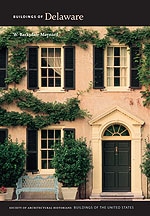European settlement of the Delaware Valley began with the landing of Swedish ships Kalmar Nyckel and Fogel Grip here at the Rocks in 1638 and the construction of a fort designed by engineer Peter Lindeström. As the Tercentenary approached, commemorations were planned, and it was noted that two million Americans were of Swedish descent. The Swedish Crown Prince Gustav Adolf solicited donations from all citizens of his country for the erection of a monument, and 170,000 persons contributed. The park was a joint effort; Swedish sculptor Carl Milles provided the sculpture (plus an exact replica for Goteborg, Sweden) and a Philadelphia landscape design firm prepared the site, a former dump in the midst of an industrial district along an oily river. American Car and Foundry stood directly across the street, and not a trace remained of the fort the Swedes had built or of the marshes that surrounded it protectively upstream and down. A high wall was erected (of 300,000 handmade Virginia bricks and 6,000 cubic feet of granite), paths were laid, sweetgum trees planted, and stone bollards erected at the edge of a plaza beside what remained of the Rocks. During the dedication in June 1938, an entourage of Swedish dignitaries disembarked from a ship in a lashing rainstorm, accompanied by President Franklin D. Roosevelt. The park, born in such a spirit of enthusiasm, subsequently saw little use despite its status as a National Historic Landmark.
You are here
Fort Christina Park
1937–1938, Wheelwright and Stevenson, landscape architects. Christina River at 7th St., east of Swedes Landing Rd.
If SAH Archipedia has been useful to you, please consider supporting it.
SAH Archipedia tells the story of the United States through its buildings, landscapes, and cities. This freely available resource empowers the public with authoritative knowledge that deepens their understanding and appreciation of the built environment. But the Society of Architectural Historians, which created SAH Archipedia with University of Virginia Press, needs your support to maintain the high-caliber research, writing, photography, cartography, editing, design, and programming that make SAH Archipedia a trusted online resource available to all who value the history of place, heritage tourism, and learning.









